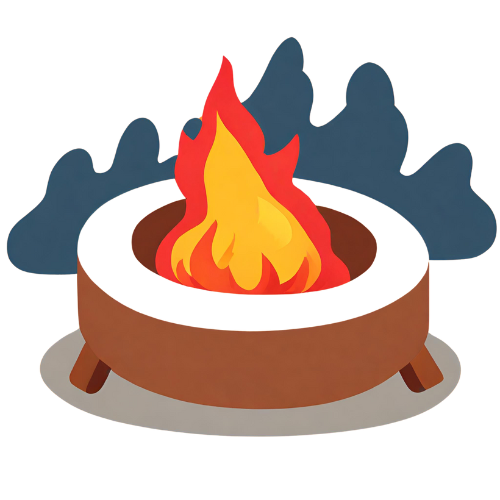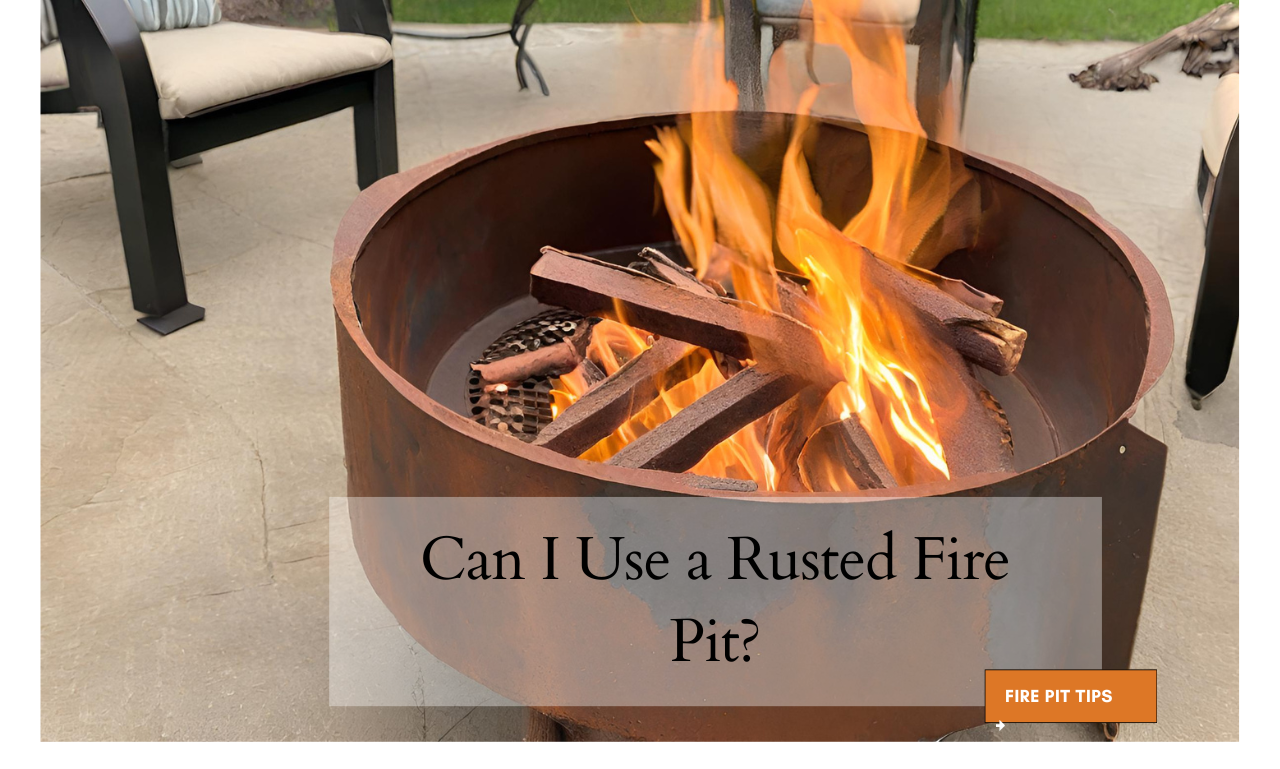Yes, you can use a rusted fire pit, but it’s not the best idea. Rust weakens the metal, making the fire pit less safe. If the rust is just on the surface, you might still use it, but be cautious. Deep rust can cause holes or weak spots where hot coals or wood could fall through, creating a fire hazard.
Rust happens when metal is exposed to moisture and air for a long time. In a fire pit, this is often because of rain or dew. The heat from fires can also speed up rusting. If your fire pit is starting to rust, it’s a sign that the metal is breaking down. This doesn’t just look bad; it can be dangerous.
Why is it Happening
Rust on your fire pit happens mainly because of one thing: moisture. When your fire pit is outside, it’s exposed to things like rain, dew, or even just humidity in the air. This moisture reacts with the metal of the fire pit, especially if it’s made of iron or steel, and starts the rusting process. It’s a natural reaction where the iron in the metal combines with oxygen from the water, creating iron oxide, which is rust.
Another reason for rusting can be the high heat from fires. When you use your fire pit, the metal gets hot, and if there’s any moisture on or near the metal, it speeds up the rusting. Over time, the repeated heating and cooling of the metal, mixed with moisture exposure, can make the rust problem worse. This is especially true if the fire pit isn’t dried off or covered after use.
Besides moisture and heat, other factors like salt in the air, especially in coastal areas, or chemicals used near the fire pit can also speed up rusting. Even the quality of the metal can make a difference.
How to Prevent a Rusted Fire Pit
Preventing rust on your fire pit is key to keeping it safe and extending its lifespan. Here’s what you can do:
Use a Cover
A simple and effective way to prevent rust is to use a cover for your fire pit. When not in use, covering it up can protect it from rain, dew, and even morning mist. Look for a waterproof and durable cover that fits your fire pit well. This will keep moisture away from the metal, significantly reducing the chances of rust formation.
Proper Storage
During seasons when you’re not using the fire pit, like in winter, store it in a dry, covered place. If it’s portable, keep it in a shed or garage. This limits its exposure to harsh weather elements that can contribute to rusting.
Regular Maintenance
Regularly check your fire pit for early signs of rust. If you spot any, address it immediately. Clean the fire pit after use, removing ash and debris, as these can retain moisture. Occasionally, you might want to apply a rust-inhibiting spray or paint, especially if you start seeing small rust spots.
Choose Rust-resistant Materials
If you’re buying a new fire pit or replacing an old one, consider one made from rust-resistant materials. Stainless steel, for instance, is more resistant to rust compared to regular steel or iron. Though they might be more expensive, these materials can be more cost-effective in the long run due to their durability.
Step 1: Safety Preparation
Wear gloves and safety glasses for protection against rust and dust particles.
Step 2: Cleaning the Fire Pit
Remove ash and debris. Use a wire brush, like the ‘ABC Wire Brush’, to scrub off loose rust and dirt. This prepares the surface for further treatment.
Step 3: Sanding the Rust
- Start with a coarse grit sandpaper, like ‘Gator Grit Sandpaper’, to remove heavy rust.
- Switch to a finer grit sandpaper for a smoother finish.
- Focus on the most rusted areas, sanding down to the metal.
Step 4: Wipe and Dry
- Clean off the dust from sanding with a damp cloth.
- Let the fire pit dry completely.
Step 5: Applying Rust-Inhibitor
- Use a product like ‘Rust-Oleum Rust Reformer’ to treat the sanded areas.
- Follow the product instructions for application and drying times.
Step 6: Repainting (Optional)
- If desired, repaint your fire pit for added protection and aesthetics.
- Use a high-heat-resistant paint like ‘Rust-Oleum High Heat Spray’.
- Apply evenly, following the directions on the paint can.
Step 7: Regular Maintenance
- Keep an eye on your fire pit for new signs of rust.
- Regular cleaning and immediate treatment of any small rust spots can prevent larger issues.
Pros & Cons of Using a Rusted Fire Pit
Pros:
- Cost-Effective: Using your existing rusted fire pit can save money compared to buying a new one.
- Aesthetic Appeal: Some find the rustic look of a rusted fire pit appealing, adding character to outdoor spaces.
- Recycling: Continuing to use a rusted fire pit is a form of recycling, reducing waste.
- Heat Resistance: Rust doesn’t affect the fire pit’s ability to contain a fire, as it still provides a heat-resistant enclosure.
Cons:
- Safety Risks: Rusted fire pits can have weakened structural integrity, posing a risk of collapse or holes that could let embers escape.
- Shorter Lifespan: Continued rusting can significantly shorten the fire pit’s lifespan.
- Health Hazards: Rust flakes and dust can be a health hazard, especially if they come into contact with food or skin.
- Decreased Efficiency: Rust can affect the fire pit’s ability to distribute heat evenly.
- Maintenance Challenges: Keeping a rusted fire pit safe for use requires more frequent maintenance and care.
- Reduced Aesthetics: While some may like a rustic look, a heavily rusted fire pit can be seen as unsightly, impacting the overall look of outdoor spaces.
Conclusion
If the rust is just surface-level, you might be able to keep using your fire pit safely with some care and maintenance. But if the rust has deeply penetrated, affecting the structural integrity, it might be time to consider getting a new one. It’s better to be safe and enjoy your outdoor moments without any worries. Whether you choose to keep using your rusted fire pit or decide to replace it, just make sure you’re doing what’s best for your safety and enjoyment.

